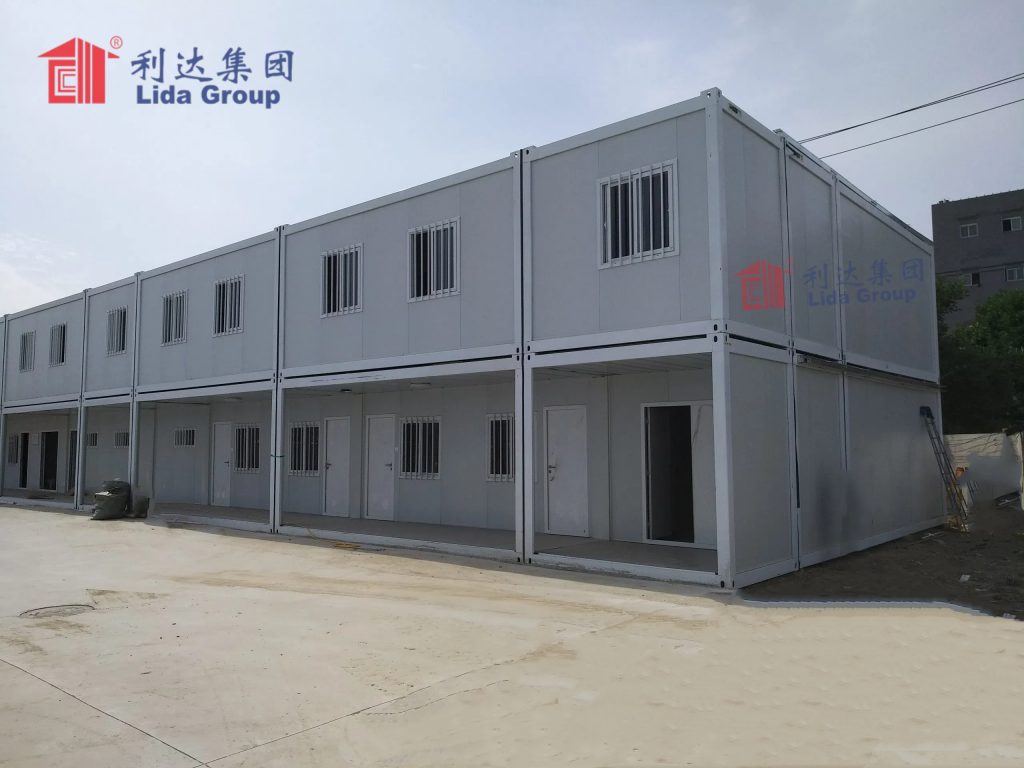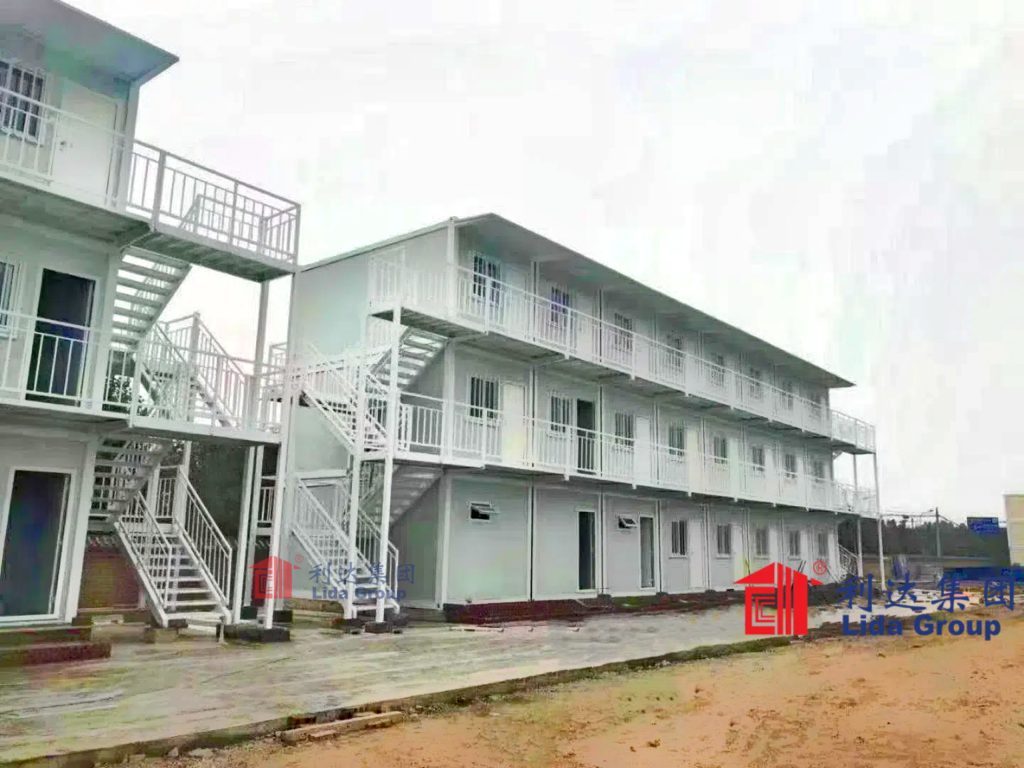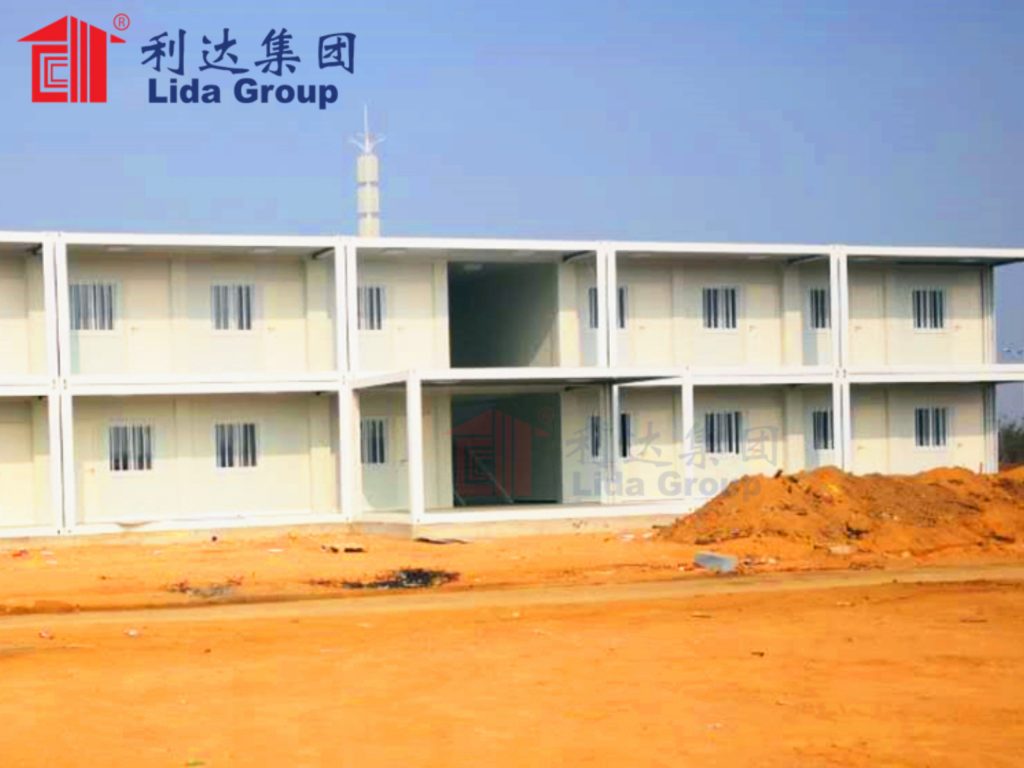Researchers Collaborate on Portable Living Units for Remote Outposts
As exploration and development activities push into more isolated and inhospitable regions worldwide, accommodating staff and workers in such areas presents unique challenges. Temporary or semi-permanent settlements must provide livable quarters while also being rapidly deployable, self-contained and easy to relocate as needs change. For this purpose, a team of researchers has partnered with modular construction specialist Lida Group to develop innovative portable living units combining modified cargo boxes with detachable composite building skins.
Accommodating Remote Operations
Whether it is extraction and mining ventures accessing new resource frontiers, scientific outposts established in polar environments, or aid camps supporting disaster response missions, pop-up settlements must often be operationalized miles from existing infrastructure. Conventional building solutions like wooden structures or prefabricated modules lack the mobility required to regularly shift locations as exploration spreads or deteriorating conditions force retreat. Simple tents and basic shelters meanwhile fail to deliver standards of comfort and amenities workers need to productivity survive isolation.
Traditionally, ad-hoc site villages comprised of clustered freight vans, shipping containers or converted trailers have been commonplace. While mobile, these rudimentary setups presented health, safety and environmental risks due to lack of insulation, sanitation systems and fire protection. Major costs also arose from repeated transport, setup/breakdown and disposal of temporary quarters after short lifecycles. Seeking sustainable improvements, a cross-disciplinary research collaboration with Lida Group aims to develop next-generation portable living units optimized for remote operations.

Concept Design Development
Taking standard sea freight containers as the structural bases, researchers worked with Lida engineers to modify units by adding reinforced flooring, braced frames and key connections. Cargo doors were replaced with insulated composite wall/roof panels fitted with openings for windows and doors. Electrical, plumbing and HVAC systems were integrated into panel cavities alongside rigid conduit to enable quick hookups on-site.
Specialized furniture modules like beds, desks and storage units were designed to nest together for efficient transport then assemble rapidly inside completed living spaces. Mobile power and sanitation trailers were also adapted to externally support clusters of units with utilities. Using containers ensured strength and durability for transport over rough terrain while interior retrofits focused on comfort, environmental control and fire safety lacking in conventional setups.
Extensive Computational Modeling
Computational fluid dynamics (CFD) modeling techniques were employed to optimize airflow and cross ventilation performance of prototype housing designs under varying climate conditions. Thermal analysis evaluated insulation levels achievable through different composite panel constructions to dictate specifications. Structural modeling validated load bearing capacities and ensured durability under dynamic loading scenarios such as high winds or vehicle transport.
Fire modeling played a key role to certify panel materials and assembly methods met strict standards for habitation fire protection. Embodied carbon and life cycle assessments informed choices of recyclable, non-toxic construction materials lowering environmental footprint. Acoustic testing aided noise control strategies between adjacent units in communal living arrangements. Ergonomic evaluations helped maximize efficient use of confined interior spaces.

Prototype Development and Testing
Drawing from computational analyses, a series of full-scale portable living unit prototypes were fabricated in Lida production facilities through partnership with researchers. Standard-sized cargo containers formed structural bases outfitted internally and externally with prefabricated composite building shells. Utility connections were installed and integrated interior furnishing modules populated prototype homes ready for mobility and function testing.
Initial bench testing focused on structural integrity evaluation through simulated transport vibration and impact loading profiles. Thermal comfort, energy usage and air quality were monitored under variable climate conditions in controlled lab environments. Fire suppression and containment capabilities were certified through regulated burn tests. Field deployments were conducted in remote arctic, alpine and desert locations to evaluate usability, durability and maintenance needs under real working conditions. User experience surveys provided feedback for refining design.
Pilot Project Implementations
Showing promising results, prototype portable living units garnered industrial interest and several pilot implementations were launched. A mining firm installed clusters of prefabricated housing on temporary drill sites in Mongolia’s Gobi Desert, supporting expedited setup and relocation. Scientific outposts in Iceland and Antarctica integrated portable home prototypes for researchers braving extreme seasonal isolation. Disaster relief agencies deployed units for rapid camp housing after severe storms in the Philippines.
In each implementation, standardized cargo container bases coupled with quick-attach external insulating shells streamlined transportation and assembly. Self-contained mechanical, electrical and plumbing systems maintained comfortable living standards without permanent infrastructure. Structurally robust yet lightweight composite panels withstood harsh exposures while simplifying eventual relocation or breakdown. User feedback further refined unit designs for diverse remote applications.

Ongoing Research & Commercialization
Encouraged by pilot project successes, ongoing collaborative research continues optimizing portable living unit designs. Focus areas include expanding customizable interior configuration options, integrating renewable power/water capture systems, and exploring modular expansions like additional rooms or shared community spaces. Field monitoring tracks long-term performance of initial prototype deployments to refine durability, optimal lifespan estimates, and end-of-life disposal/ recycling. Development also explores portable classrooms, medical clinics, labs and other specialty buildings serving remote outposts.
In parallel, commercialization efforts have spun off a new venture between researchers and Lida Group manufacturing specialized portable buildings. A scalable production facility now mass-produces standardized living unit shells alongside tailored solutions for unique projects. Modules are shipped globally to employers, governments, NGOs and contractors supporting remote operations. Research continues to inform design upgrades addressing evolving needs while leveraging modular buildings benefits of mobility, comfort and sustainability in isolation.
Conclusion
Meeting the accommodations challenges of temporary and semi-permanent settlements in remote, inhospitable regions worldwide requires creative, optimized solutions. Through collaborative R&D, researchers and industrial partners have developed innovative portable living units combining reusable shipping container bases with quick-attaching, insulated composite exterior panels. Computational modeling, full-scale prototyping and pilot implementations validate structural integrity, environmental control, fire protection, and usability in diverse challenging conditions not served by conventional accommodations.
Ongoing field monitoring and refinement further improves designs for shifting needs while commercialization now supplies standardized portable homes globally. Such modular living units may transform accommodation of jobs pushing into resource frontiers, scientific research stations braving isolation, and rapid deployment shelter for disaster response promoting productivity, health, safety and environmental sustainability where conventional building is impractical. Their success illustrates collaborative innovation’s potential to engineer solutions previously deemed unachievable.

Related news
-
Engineers specify inclusive prefabricated wellness units from Lida Group equipped with composite panel laundry, medical and kitchen amenities within mobile labor camps.
2024-10-31 11:11:35
-
Community organizations partner with Lida Group to implement steel structural halls protected by non-combustible envelope for multipurpose community venues and disaster shelters within community means.
2024-10-29 16:35:41
-
Non-profit organizations select robust waterproof structural facilities from Lida Group at community-level costs for agricultural processing and value-added ventures.
2024-10-29 15:40:46
contact us
- Tel: +86-532-88966982
- Whatsapp: +86-13793209022
- E-mail: sales@lidajituan.com


